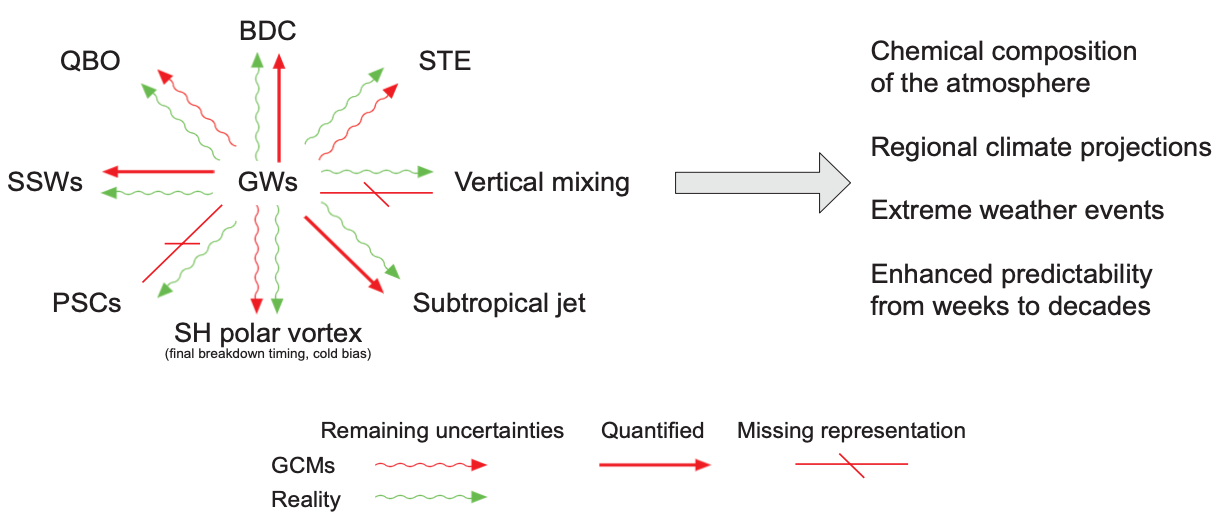Unravelling climate impacts of atmospheric internal gravity waves (GW-clim)

This Czech Science Foundation funded project finances the formation of a gravity wave (GW) research group at Charles University. Within the project, our understanding of GW effects on atmospheric dynamics, composition and coupling across atmospheric layers will be revisited and advanced. GWs exist on a variety of scales, but typically a significant portion of the GW spectrum remains unresolved in global weather prediction or climate models and the GW impacts need to be parameterized. Our knowledge on GW impacts ranging from regionality of precipitation to the evolution of the ozone layer has been so-far based on their predominantly parameterized effects. Analyzing the resolved GW effects will improve our understanding on the forcing of selected atmospheric phenomena, but will also put additional constraints on the current GW parameterizations by showing to what extent their effects (and our current understanding) are artificial. This will help us to modify GW parameterization schemes with an ultimate goal of improving future climate predictions.
